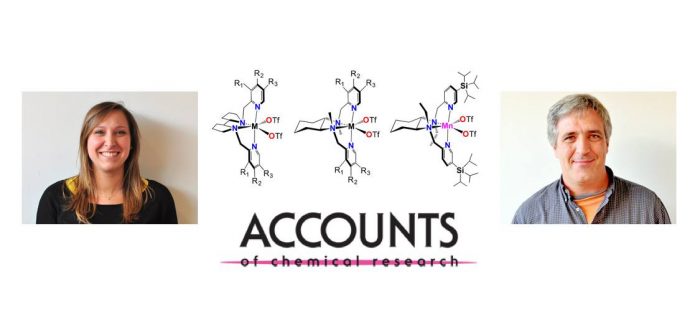Aliphatic C–H bond functionalization is at the frontline of research because it can provide straightforward access to simplified and cost-effective synthetic procedures. A number of these methodologies are based on hydrogen atom transfer (HAT), which, as a consequence of the inert character of C–H bonds, often represents the most challenging step of the overall process. Because the majority of organic molecules contain multiple nonequivalent C–H bonds that display similar chemical properties, differentiating between these bonds with high levels of selectivity represents one of the most challenging issues. Clarification of the factors that govern the relative reactivity of C–H bonds toward HAT reagents is thus of primary importance in order to develop selective functionalization procedures.
In this Account we describe, through the combination of kinetic studies employing a genuine HAT reagent such as the cumyloxyl radical, along with oxidations performed with H2O2 and iron or manganese catalysts, our contribution toward the development of selective C–H functionalization methodologies. Despite the different nature of these reagents, an oxygen-centered radical and a metal–oxo species, congruent reactivity and selectivity patterns have emerged, providing strong evidence that both reactions proceed via HAT. Consequently, selectivity in this class of metal catalyzed C–H oxidations can be reasonably predicted and synthetically exploited. Amides have been identified as preferential functional groups for governing selectivity on the basis of electronic, steric, and stereoelectronic effects. Torsional effects have proven moreover to be particularly important C–H directing factors in the oxidation of cyclohexane scaffolds where a delicate balance of these effects, in synergistic combination with catalyst design, enables highly chemoselective and enantioselective oxidations. Medium effects have been also shown to govern the relative HAT reactivity of C–H bonds in proximity to polar, hydrogen bond acceptor (HBA) functional groups. By engaging in hydrogen bonding with these groups, fluorinated alcohols strongly deactivate proximal C–H bonds toward HAT-based oxidation. As a result, alcohols, ethers, amines, and amides, which are electron rich and effective proximal C–H activating groups toward HAT reagents in conventional solvents, become oxidatively robust deactivating functionalities that direct C–H oxidation toward remote positions. These deactivating effects enable moreover the accomplishment of product chemoselective methylenic hydroxylations. Overall, clarification of the factors that govern HAT-based reactions has served to provide unique examples of catalytic methodologies for chemoselective and enantioselective oxidation of nonactivated aliphatic C–H bonds of potential utility in organic synthesis.
This Accounts of Chemical Research was published today:
M. Milan, M. Salamone, M. Costas, and M. Bietti
“The Quest for Selectivity in Hydrogen Atom Transfer Based Aliphatic C–H Bond Oxygenation”
Acc. Chem. Res. 2018, ASAP [abstract]
DOI: 10.1021/acs.accounts.8b00231

